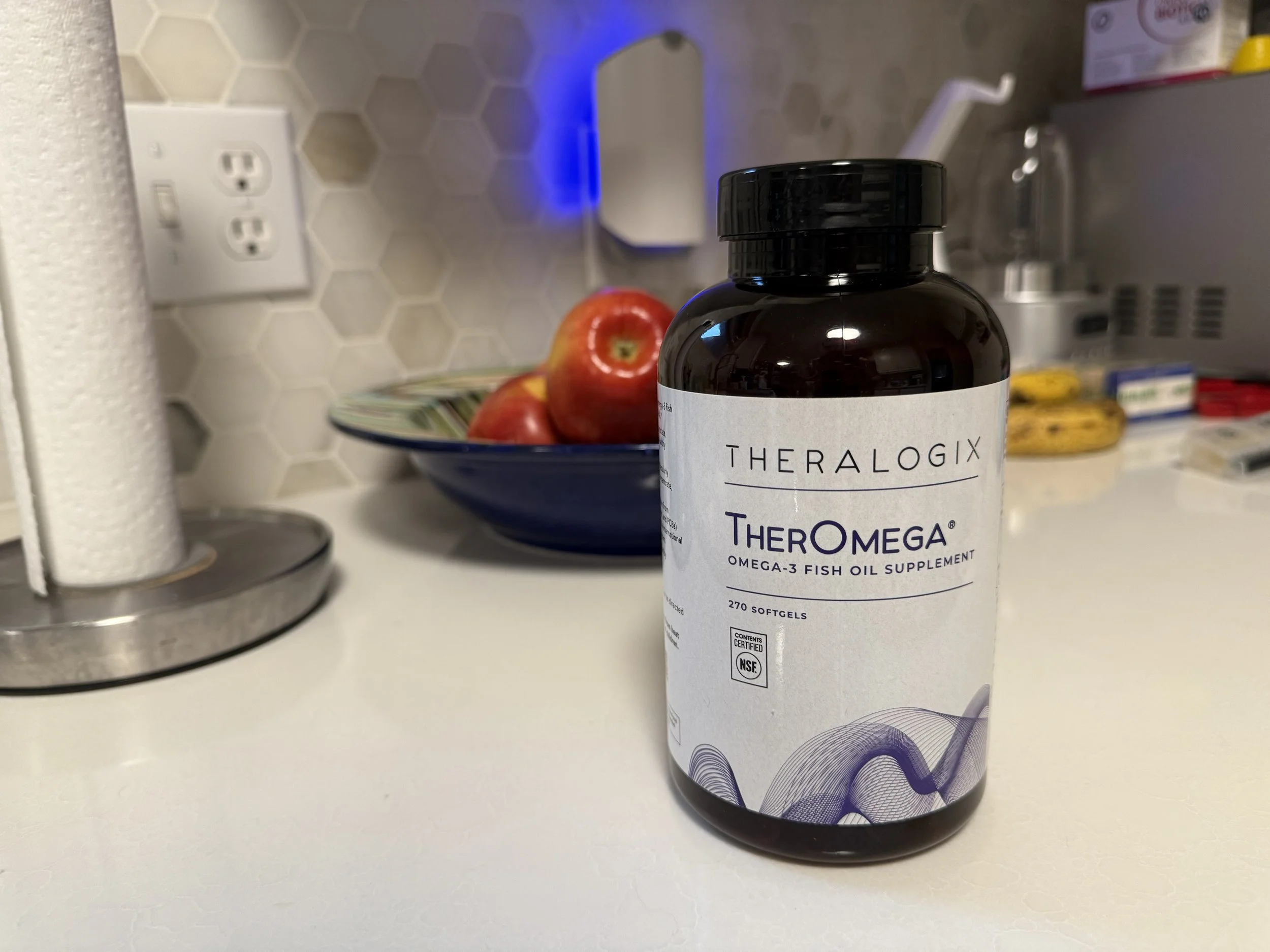Fish Oil, Omega-3, Omega-6, and the Balance That Actually Matters
Fish oil and essential fatty acids are confusing topics for a lot of people. Some claim fish oil is a cure-all. Others say supplements do nothing. The truth sits between these extremes. To understand where fish oil actually fits into health and performance, you need to know how omega-3 and omega-6 fats work and how they interact.
This article explains what matters and what does not, without the exaggerated claims.
What Omega-3 and Omega-6 Fats Are
Omega-3 and omega-6 fats are essential fatty acids. The body cannot produce them and must obtain them from food. They support cell membrane health, brain function, hormone signaling, inflammation regulation, cardiovascular function, and recovery.
Omega-3 fats include ALA from plants and EPA and DHA from marine sources. Omega-6 fats come mainly from nuts, seeds, grains, and vegetable oils. Both groups are important. The key is the proportion in which they are consumed.
The Omega-6 to Omega-3 Ratio Problem
Traditional diets appear to have contained roughly a 1 to 1 or 4 to 1 ratio of omega-6 to omega-3. In contrast, the modern Western diet often ranges from 10 to 1 up to 20 to 1.
Omega-6 and omega-3 fats influence inflammatory signaling. Omega-6 derived compounds tend to increase inflammation. Omega-3 derived compounds tend to reduce or resolve inflammation. Inflammation itself is necessary for immunity and recovery. The problem is chronic low grade inflammation that can develop when omega-6 intake consistently overwhelms omega-3 intake.
Higher ratios are associated with increased cardiovascular risk, reduced metabolic health, slower recovery from training, and higher risk of inflammatory disorders. Omega-6 itself is not harmful. The issue is the imbalance created by modern eating patterns.
How Inflammation Is Measured
Chronic inflammation is not measured by one single marker. Instead, clinicians look at patterns across several biomarkers. These markers often shift when the omega-6 to omega-3 ratio is too high.
Key biomarkers include:
1. High sensitivity CRP (hs-CRP)
This is one of the most useful markers for chronic low grade inflammation.
Higher values can reflect systemic inflammatory activity.
An ideal reading is often under 1.0 mg/L.
2. Triglycerides
High triglycerides frequently correlate with low omega-3 intake.
EPA and DHA reduce triglycerides, which is one reason fish oil is used clinically.
3. Omega-3 Index
This test measures EPA and DHA in red blood cell membranes.
Below 4 percent suggests low omega-3 status.
Between 8 and 12 percent is considered optimal in many studies.
4. AA to EPA Ratio
This ratio compares arachidonic acid, which is omega-6 derived, to EPA, which is omega-3 derived.
A high AA to EPA ratio suggests an inflammatory tilt and low omega-3 intake.
5. Advanced lipid markers
LDL particle number and small dense LDL often increase when inflammation is present.
These are not specific to fatty acid balance but often move in the same direction when inflammation rises.
These markers help create a picture of how inflammation is behaving in the body and whether fatty acid balance is likely contributing.
What Fish Oil Actually Does
Fish oil contains EPA and DHA, two omega-3 fats that support several aspects of health. The most consistent benefits include lower triglycerides, support for cardiovascular health, improved inflammation resolution, improved cell membrane fluidity, and potential improvements in muscle recovery.
These effects are real but generally modest. Fish oil helps most when dietary intake of omega-3 fatty acids is low or when someone trains intensely, has elevated triglycerides, or has a low omega-3 index.
Why Omega-6 Is Not the Villain
Omega-6 fats often get unfairly criticized online and perhaps this is the main reason behind why seed oils have been so villainized over the past few years (mistakenly so). Nuts and seeds, which are high in omega-6, are among the healthiest foods available. Certain vegetable oils can also play a helpful role in moderation.
Omega-6 becomes problematic when it dominates the diet and omega-3 intake is very low. Extreme reductions in omega-6 do not consistently improve health. A more effective approach is to increase omega-3 intake and reduce reliance on ultra processed foods.
Balance is the target, not elimination.
How to Improve Omega-3 and Omega-6 Balance
Increase omega-3 rich foods: Aim for two to three servings of salmon, sardines, mackerel, or trout each week.
Supplement if needed: If you do not eat fish, consider algae oil or a high quality fish oil. Look for third-party tested products with clear EPA and DHA amounts. I’ve researched that you should try steer toward EPA/DHA ratios in the 4:3 to 3:2 range. As such, my go-to Omega 3 supplement that I take daily is Theologix Omega 3 which you can get off Amazon.
Reduce reliance on ultra processed foods: Restaurant frying oils, packaged snacks, and baked goods are significant contributors to high omega-6 intake.
Choose whole food fats: Olive oil, avocados, nuts, and seeds help maintain a healthier fat balance.
Track your biomarkers: Consider checking hs-CRP, triglycerides, the omega-3 index, and the AA to EPA ratio to see if your balance is improving.
My Omega 3 of choice: Theralogix TherOmega Omega-3 Fish Oil Supplement
Putting It All Together
Improving the balance between omega-3 and omega-6 fats is a simple, sustainable nutrition upgrade. You do not need extreme diet rules to make progress. Most people benefit from a focus on food quality, modest fish intake, and the occasional omega-3 supplement.
A better balance of fats supports healthier inflammation control, better recovery, improved metabolic health, and long-term resilience.
[This post is for informational purposes only and is not medical advice. Always consult your healthcare provider before making changes to your diet, supplements, or health routine.]


